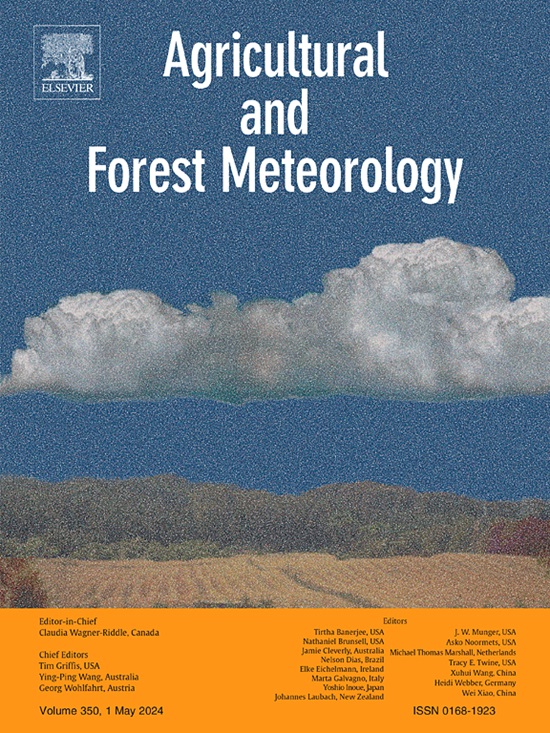Spatio-temporal simulation of net ecosystem productivity in the Tibetan Plateau region using multi-scale data assimilation for terrestrial ecosystem process model
IF 5.6
1区 农林科学
Q1 AGRONOMY
引用次数: 0
Abstract
Accurately elucidating the spatio-temporal pattern of net ecosystem productivity (NEP) in grasslands on the Tibetan Plateau (TP) is essential for understanding the feedback mechanisms of the carbon cycle to climate and grazing. Parameter localization through data assimilation for terrestrial ecosystem process model is the dominant approach to accurately simulate NEP. However, current studies calibrate ecosystem process model by grassland types, neglecting the spatial variation of model parameters within the same type. Consequently, the calibrated model struggles to characterize the spatially diverse ecological mechanisms. Therefore, we propose a multi-scale parameterization scheme for the CENTURY model, described as follows. (1) Calibrate model parameters in terms of grassland type by assimilating NEP observations from eddy covariance (EC) stations. (2) Migrate the grassland type-scale model to discrete pixels within prohibited pastures, then fine-tune the model parameters with strong spatial divergence and sensitivity by assimilating remotely sensed NPP data on a per-pixel basis; (3) Use ensemble learning algorithms to construct spatial interpolation models driven by environmental factors for discrete parameters. The results confirmed that the calibrated CENTURY model has higher spatial generalization performance compared to model calibrated using previous parameterization scheme. Specifically, the RMSE (R2) for NEP simulations at all EC stations was reduced from 10.18 g C m2 mo-1 (0.58) to 7.58 g C m2 mo-1 (0.72). The CENTURY model was employed in the Selinco region to generate spatio-temporal datasets of grassland NEP from 1980 to 2020, incorporating various grazing intensity scenarios. The following conclusions were drawn from the spatio-temporal analyses. (1) Regardless of grazing scenarios, almost all grasslands functioned as carbon sinks, exhibiting a significant annual increase of net sinks. (2) The annual net sink decreased significantly with altitude. (3) Alpine meadows and alpine steppe were the main contributors to carbon sequestration because alpine meadows have high sequestration capacity and alpine steppe are widely distributed.
求助全文
约1分钟内获得全文
求助全文
来源期刊
CiteScore
10.30
自引率
9.70%
发文量
415
审稿时长
69 days
期刊介绍:
Agricultural and Forest Meteorology is an international journal for the publication of original articles and reviews on the inter-relationship between meteorology, agriculture, forestry, and natural ecosystems. Emphasis is on basic and applied scientific research relevant to practical problems in the field of plant and soil sciences, ecology and biogeochemistry as affected by weather as well as climate variability and change. Theoretical models should be tested against experimental data. Articles must appeal to an international audience. Special issues devoted to single topics are also published.
Typical topics include canopy micrometeorology (e.g. canopy radiation transfer, turbulence near the ground, evapotranspiration, energy balance, fluxes of trace gases), micrometeorological instrumentation (e.g., sensors for trace gases, flux measurement instruments, radiation measurement techniques), aerobiology (e.g. the dispersion of pollen, spores, insects and pesticides), biometeorology (e.g. the effect of weather and climate on plant distribution, crop yield, water-use efficiency, and plant phenology), forest-fire/weather interactions, and feedbacks from vegetation to weather and the climate system.

 求助内容:
求助内容: 应助结果提醒方式:
应助结果提醒方式:


